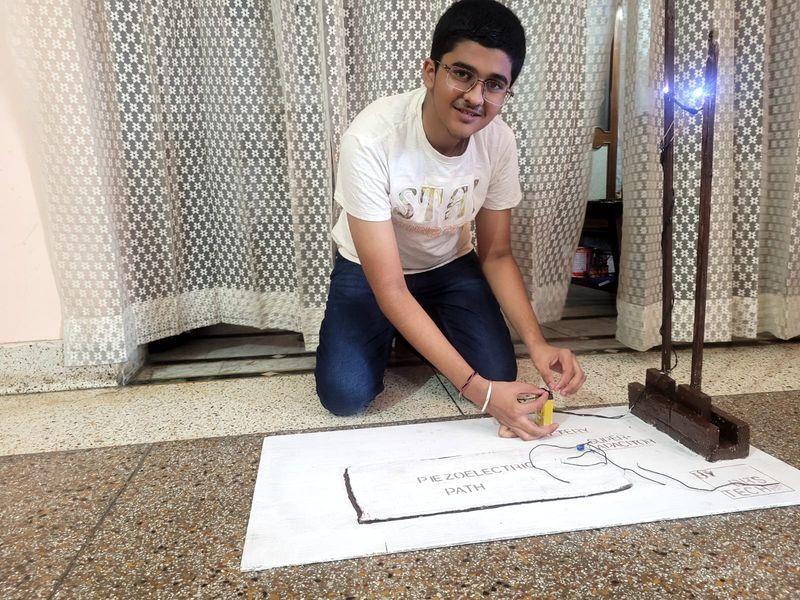
Hoshiarpur Student Builds Device to Generate Power from Footsteps
In a remarkable display of innovation and creativity, a Class 8 student from Hoshiarpur, Punjab, has developed a device that harnesses energy from the simple act of walking, revolutionizing the way we think about power generation. Sanchit, the young student, has caught the attention of local officials, scientists, and enthusiasts alike with his science project, “Power beneath our feet,” which uses piezoelectric technology to convert footsteps into electricity.
Sanchit’s project, which has been making waves in the region, involves the use of piezoelectric sensors that are embedded in a special device. When a person walks or steps on the device, the sensors generate an electric charge, which can be used to power small appliances or devices. The device is designed to be compact and portable, making it an attractive solution for remote areas or emergency situations where access to electricity is limited.
The concept of harnessing energy from human movement is not new, but Sanchit’s project is unique in its simplicity and effectiveness. The device is easy to use, and the energy generated can be stored in a battery or used immediately. This innovative technology has the potential to transform the way we think about power generation, providing a sustainable and renewable source of energy.
Sanchit’s inspiration for the project came from his curiosity about how to generate electricity. He was fascinated by the idea of harnessing energy from natural sources, such as wind, water, and sun. After conducting extensive research, he stumbled upon the concept of piezoelectric technology, which converts mechanical energy into electrical energy. The idea of using this technology to generate power from footsteps was born, and Sanchit set out to design and build a prototype.
The device is made up of several components, including piezoelectric sensors, a circuit board, and a battery. The sensors are attached to the sole of the device, which is designed to be worn like a shoe. When a person walks, the sensors generate an electric charge, which is sent to the circuit board and stored in the battery. The battery can then be used to power small devices, such as a phone or a flashlight.
Sanchit’s project has not gone unnoticed. Local officials and scientists have been impressed by his innovative approach to power generation, and his device has been recognized as a potential game-changer in the field of renewable energy. The student’s project has also sparked interest among environmentalists and sustainability experts, who see the potential for this technology to reduce our reliance on fossil fuels and mitigate the effects of climate change.
In an age where technology is constantly evolving, Sanchit’s project is a testament to the power of innovation and creativity. The young student’s determination and passion for science have led to a breakthrough that has the potential to transform the way we live and work. As we move forward, it will be exciting to see how this technology develops and the impact it has on our daily lives.
Sanchit’s project is a shining example of the impact that young minds can have on the world. His innovative approach to power generation has the potential to inspire a new generation of scientists, engineers, and entrepreneurs. As we look to the future, it is clear that the next big breakthroughs will come from the minds of young people like Sanchit, who are pushing the boundaries of what is possible.






